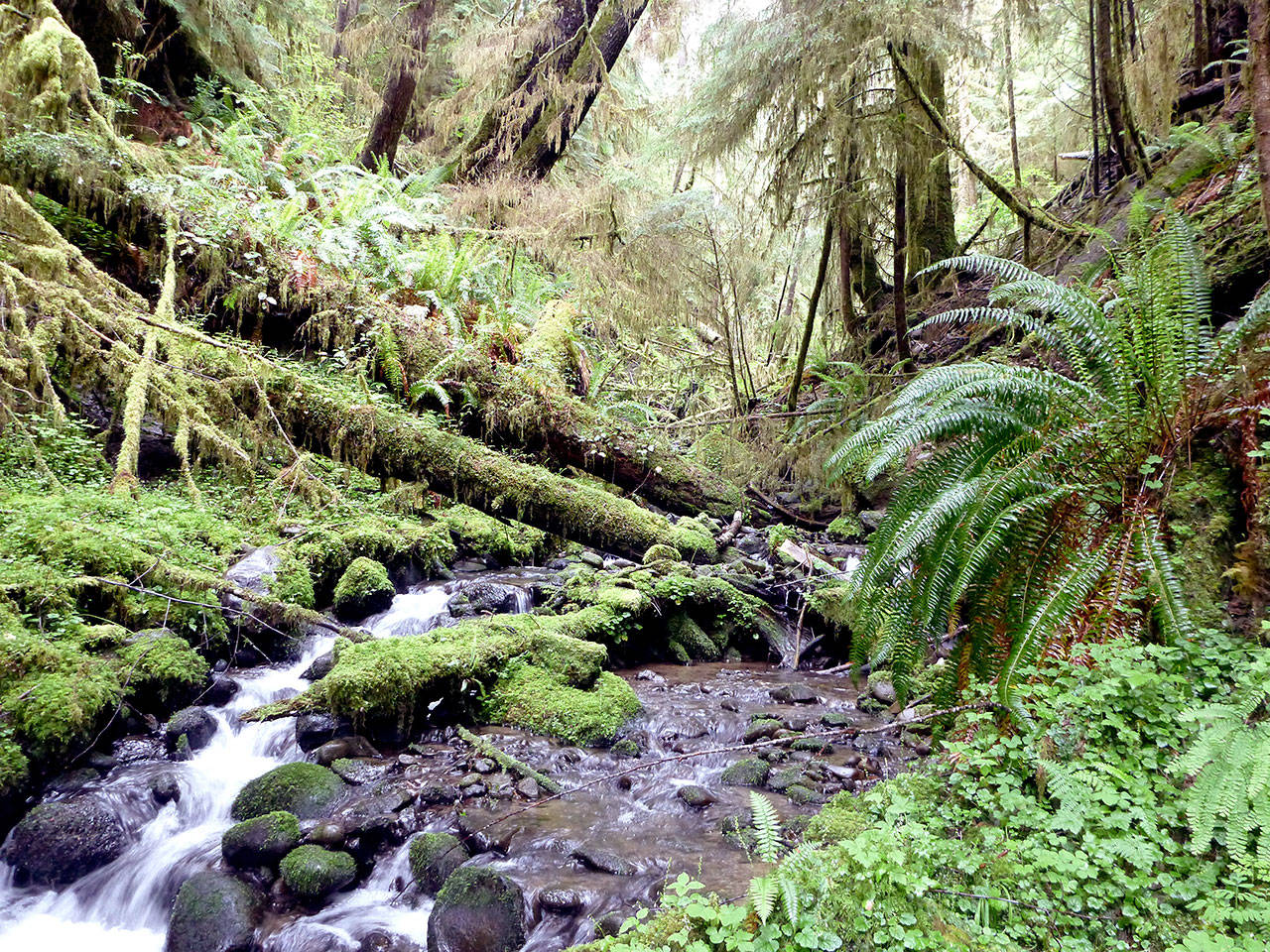Researchers are preparing for a large-scale forest management experiment in the Olympic Experimental State Forest with hopes of benefiting the environment, economy and surrounding communities.
It’s a first-of-its-kind experiment for the state and could influence forest management across the Pacific Northwest, said Bernard Bormann, director of the Olympic Resource Center and a lead for the project.
The study, a joint Department of Natural Resources and University of Washington effort called the “Large-Scale Integrated-Management Experiment,” will compare four management strategies across 16 watersheds in the Olympic Experimental State Forest (OESF).
The OESF encompasses about 270,000 acres of state trust lands on the western Olympic Peninsula.
The strategies will be applied to four watersheds each in areas ranging from 1,000 to 2,000 acres, Bormann said.
“It’s not like a regular research project, which are usually pretty small scale,” he said.
The project, which likely will involve 20,000 to 30,000 acres over the next decade, is expected to begin in 2018 and be fully underway in 2019, he said.
“The bulk of what we’re doing, the hard evidence we’re going to produce, will take quite a few years to fall into place,” he said.
The four strategies being implemented include zoned management, the current OESF Forest Land Plan, an Accelerated Integration strategy and a no-action control.
“The process of designing these treatments in itself is important because we are exploring forest practices that are not currently being applied,” he said.”Many of these ideas are going to have a lot of value in their own right.”
Bill Peach, Clallam County commissioner and vice chairman of the Board of Natural Resources, lauded the effort, saying it looks at more active forms of management.
“Tools such as thinning will be used to decrease the amount of time it takes for a young forest to become endangered species habitat,” he said.
“The study will gather information about the logs that are taken to market and the health of the forest including the quality of the habitat.”
The zoned management strategy is designed to mirror how DNR manages trust lands outside of the OESF.
A goal is to compare that to how harvest is managed in the OESF.
“They will get a comparison of the approaches side-by-side and we think it may influence what they decide to do statewide,” Bormann said.
The Accelerated Integration approach is not currently being applied in Washington, he said.
It includes increasing harvest amounts while thinning stands, while minimizing wind damage and providing habitat, he said.
Thinnings in Western Washington are not too profitable because of the number of trees left behind, he said.
There are fears that leaving fewer trees in a stand would leave the area prone to wind damage.
But Bormann said forest managers have had pretty good luck along the Oregon coast while increasing harvests while thinning stands.
The hope is to discover the best practices that benefit the economy, environment and local communities.
“What we’re trying to find out is whether we can have a higher level of benefit to ecosystem well-being, where you get more benefit for communities and more benefit for the ecological system,” he said.
“We don’t know if we can achieve that, but the only way we are going to find out is to try.”
While the management strategies are being implemented, researchers also hope to test new strategies to decrease costs, such as looking at new ways to build roads.
“One of the biggest costs and limits to the amount of revenue that can come from a project is road costs,” he said.
Among the ideas is exploring new ways to get temporary access to an area without building a road to current standards.
That would be done by installing mats of cross laminated timber as a road surface.
When crews are done harvesting, the mats could then be reused in other areas, he said.
“That’s just the kind of thing we want to bring to the table,” he said. “There’s so many new ideas floating around in forestry.”
Teodora Minkova, research and monitoring manager for OESF for DNR, said the study was developed after working with a variety of stakeholders.
While the study will take place over a decade, she expects results to come in at different times, she said.
She anticipates the economic outcomes and the feasibility of the different strategies would be known sooner while the ecological response will take longer.
“We’re trying some innovative approaches that haven’t been tried,” she said. “That’s what this forest is for, is to try new things.”
Jesse Major is a reporter with the Olympic Peninsula News Group, which is composed of Sound Publishing newspapers Peninsula Daily News, Sequim Gazette and Forks Forum. He can be reached at 360-452-2345, ext. 56250, or at jmajor@peninsuladailynews.com.



